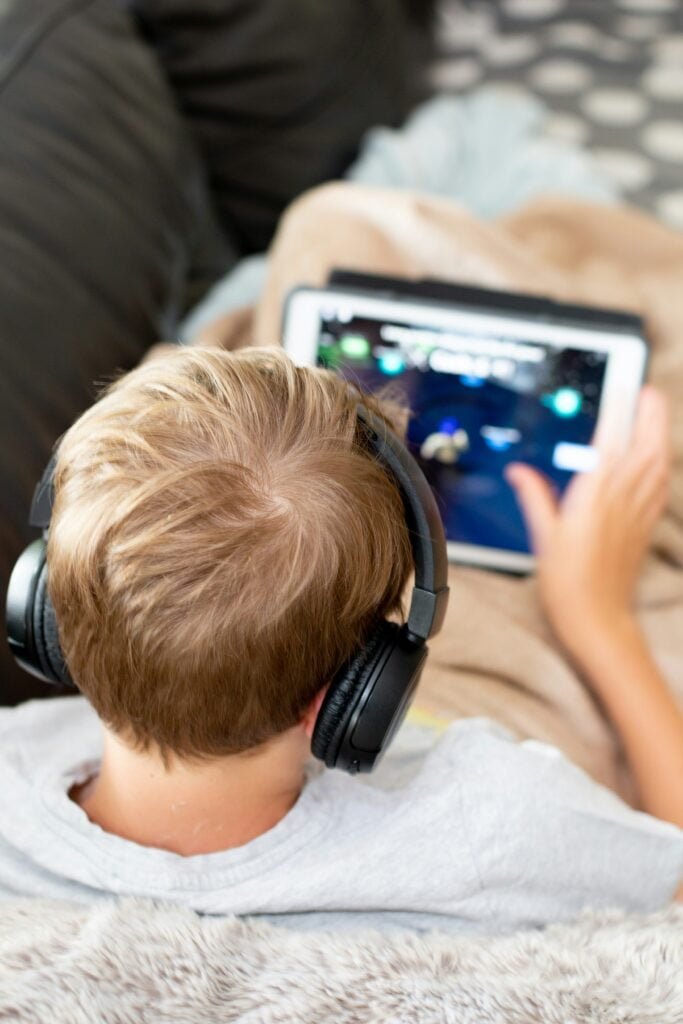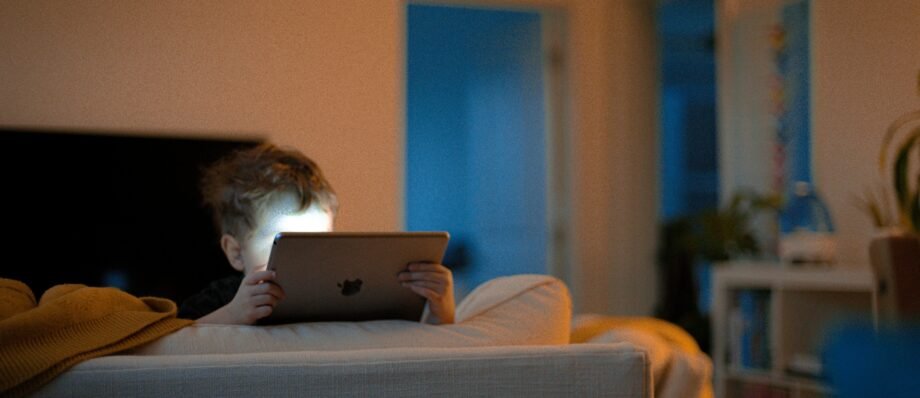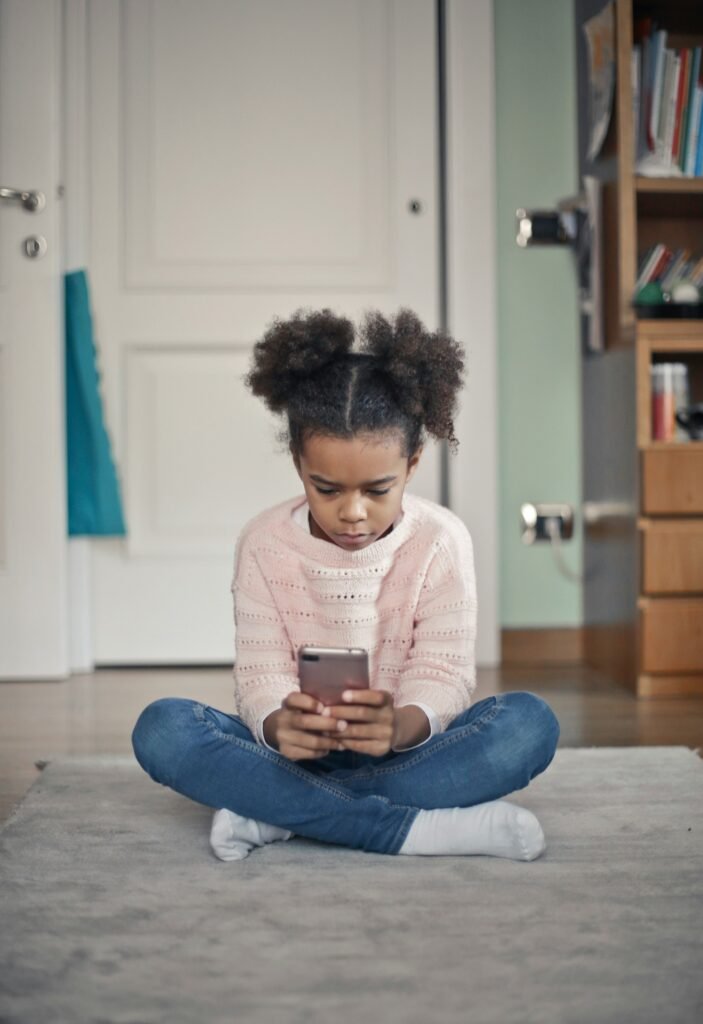Discover how excessive screen time can harm children’s mental health and vision. Learn about the negative effects and practical tips for reducing screen exposure and promoting healthy eye care.
Screen Time in Today’s Day and Age
Children today are growing up immersed in an ever-evolving digital world, using screens all day and all night long. Though screens may enhance learning, excessive screen time consumption could have negative impacts on mental and visual health.
Screen time offers numerous benefits and drawbacks: one being educational value, entertainment value and social connections; while too much screen exposure may lead to anxiety, depression or eye strain as well as vision problems.

The Impact of Screen Time on Children’s Mental Health
The Psychological Repercussions of Unrestricted Screen Time
Have you seen a child who seems preoccupied with their mobile phone, checking its news feeds and playing games without warning?
Studies show that screen time consumption can be harmful for children. Studies have proven this, as excessive screen time consumption has been shown to cause sadness, loneliness and fear among children. Being reminded constantly online of other people’s lives makes an individual feel inferior compared to them.
It can also cause disruptions to sleep; excessive brightness makes sleeping impossible! Children may have trouble falling and staying asleep due to blue light from screens which make it hard for them to stay alert and focus.
One must keep in mind that they may be finding it difficult to focus on homework or class due to an overload of information being thrust upon them, similar to trying to drink from an overly-hot firehose.
Excessive screen time consumption can leave children feeling isolated. Screen time may become distracting and make it hard for children to connect with friends and family in person due to high levels of online activity.
The Impact of Unrestricted Screen Time on Children’s Vision
Digital Eye Strain
Anyone who spends too much time staring at screens knows the discomfort of digital eye strain all too well: your eyes become tired, sore and sore after staring for too long at them. Digital eye strain affects people of all ages alike.
Digital eye strain symptoms can be very alarming and distracting.They include:
Eye Fatigue: Do your eyes seem heavy or tired after working tirelessly all day long? It could be that they have just had too much to take in at once!
Headaches: An excruciating, dull ache around the temples or forehead that feels as if someone is tightly pressing down on it.
Blurred Vision: When experiencing blurred vision, one has difficulty with focusing or seeing clearly; it’s similar to looking through fog.
Cracked eyes: Burning or scratching sensation in your eyes as though there are grains of sand stuck there.
Digital eye strain can be more than an irritating nuisance; untreated it may even pose more severe health concerns.
Screen Time and Vision: Long-Term Effects
Myopia (nearsightedness), is more likely with prolonged screen use and you feel your eyes have become fixed on close up and can no longer see faraway objects.
Overexerting myself on screen time, coupled with myopia, can damage the retina at the back of your eye – the light-sensitive tissue similar to film in a camera – which may result in vision issues such as blurred vision, night blindness or even total blindness.
Screen Brightness and Distance: What Are Their Effects?
Your eye health can be negatively impacted by how you use a computer screen. A too bright display can act like a spotlight shining directly into your eyes; too close proximity will force your eyes to work harder to focus, potentially leading to eye strain or myopia.
Ensuring Healthy Screen Time
Setting screen time limits is one of the best things you can do to protect your child’s mental health and their vision. This is like giving them a leash, but in a positive way. You’re not letting them run wild, but instead setting boundaries to help them stay fit. Limit screen time for older kids to no more than 2 hours per day and for younger children to even less.
Create a healthy viewing environment
Imagine setting up your child’s screen time setup as their own workspace; one that is comfortable and inviting like a reading corner. Here are a few suggestions on how you can achieve that:
Lighting: When placing screens in any room for use by children, make sure it is well lit. For instance, classroom screens must be properly illuminated. Consider indirect and soft lighting such as bedside lights instead of direct overhead illuminations for optimal viewing experience.
Seating: Make sure your child sits comfortably away from the monitor with feet flat on the ground as in school, to reduce neck strain. Set the screen at eye-level for best results – like having their teacher right there without homework!
Encourage regular breaks and eye exercises
Remind your child to take frequent breaks away from screens – much like during school day – such as gazing upon something distant every 20-30 minutes for 20 seconds to give their eyes a break from staring into screens for too long. This gives their eyes the time they need to relax after sitting for so many hours in class.
To soothe their eyes, teach your child simple eye exercises such as rolling their eyes in circles or looking from side-to-side and up and down – think eye yoga! It could even make for some exciting family bonding time!
Encouraging Outdoor Activities
Children can benefit greatly from spending time outside, as this provides them with fresh air and sunlight while playing outdoors is exposed to natural lighting which helps their vision as well as regulate sleep-wake cycles. Furthermore, outdoor activities may help decrease stress, anxiety and depression among them.
Parental Guidance and Support: How it Can Help Reduce Screen Time
Open Communication and Setting Expectations
Parent should always be open with their children regarding screen time limits they allow – it serves as an important opportunity to set clear expectations about digital life! Establish limits as to when and how much screen time your children should use.
Also, setting an example is key. Children tend to soak up everything that’s around them; therefore they may imitate you more readily if they see you constantly using your phone or laptop.
Healthy Screen Habits
Parents play an integral role in setting an example for our children when it comes to screen-time habits and screen habits in general. If we constantly use our phones or binge watch shows ourselves, this may give the impression that such activity is acceptable – and encourage our kids to follow suit.
Mindful use of technology means being present with your child and avoiding distractions; using technology as a learning opportunity or way to connect with family and friends – or just for entertainment!
Seeking professional assistance if you are concerned about your child’s screen-time habits or mental health is highly appreciated. These experts are capable of offering valuable advice and support for both of you.
Parents’ Impact on Children’s Screen Habits
The Influence of Parents
Parents play an integral part in shaping our children’s lives, including how they relate to technology. Keep in mind that an unstructured playtime is more valuable for a developing child and their brain health than electronics. How our kids use screens may depend on our attitudes, values and behaviors as parents. Never let screen time replace activities like reading, writing, problem-solving and playing.
Set a positive example
Establishing a good example can be one of the best ways to influence your children’s screen usage. Children often follow our example when we use technology responsibly – meaning we should limit screen time, use technology mindfully, and engage in other activities outside of screen use. By developing household rules and revising them with time, you will be able to help your child have a safe experience with technology.
Encourage Offline Activities
Encourage our children to pursue activities other than watching screens. Playing outside, reading books aloud or engaging in hobbies are all examples of activities which help develop social, cognitive and emotional skills in children. Make sure you use the apps designed for parents to have controls over their child.
How to foster a healthy relationship with technology
Technology should not be seen as an enemy, rather we should strive to foster healthy relationships between technology and our children. Teaching our kids the correct ways of using it safely and effectively is crucial; help them understand both risks and benefits associated with screen time and strive to establish digital literacy in the household.
Addressing Concerns and Challenges Associated with Maintaining Restricted Screen Time

Screen Addiction: How to Deal with it
Children may develop unhealthy relationships with screens that lead to addictive behaviors. You should address your concerns regarding screen time in your child’s life and seek professional assistance as needed.
Balance Screen Time and Real-Life Experiences
Encourage your child’s participation in engaging, physical activities that build social skills and stimulate creativity. Screens shouldn’t become their only source of entertainment!
Digital Landscape: How to Navigate it
Your child needs the skills necessary to navigate the digital world safely and responsibly, from cyberbullying prevention techniques to online behavior standards. Help them develop these abilities together!
Conclusion
Finding your way in a digital world can be tricky. While screen time may provide valuable learning and entertainment value for children, too much screen time could also negatively affect both their mental and visual wellbeing.
Start now by setting realistic screen-time limits, creating an environment conducive to healthy viewing habits, encouraging regular breaks for eye exercises and outdoor activities and setting achievable goals – this may become your way into new routines!
Parents can assist their children in adopting technology while still protecting both mental health and vision. Screen time must be used responsibly if you want your children to become responsible drivers in the future. Parents can help their children accept technology by safeguarding both mental health and vision.
FAQs
How should children’s screen time be managed daily?
The American Academy of Pediatrics advises that children under 18 should spend no more than two hours daily viewing screens for non-educational purposes, without exceptions for educational use.
How can I assist my child in creating healthy screen habits?
Set clear limits on screen time, create a healthy screen environment, promote outdoor activities and teach your child about taking breaks and practicing eye exercises.
Are there any advantages associated with screen time?
While too much screen time may have detrimental consequences, technology also offers several advantages. Educational apps and programs may help support children in learning and development; it is however essential to balance screen time with other activities.
My child is addicted to screens. What should I do to reduce screen time?
Expert advice should always be sought when your child seems addicted to screens. A therapist’s assistance may aid your child in creating positive habits and breaking free of addiction more rapidly.
Can there be any way of protecting my child’s online privacy?
Add digital skills training, device privacy controls, and monitoring to the mix for your children’s benefit. Keep an eye on their apps and websites used, while inquiring into protection for personal information.
What can I do if my child is gradually losing his or her vision?
Children experiencing any changes to their eyesight, including blurred vision, difficulty reading or light sensitivity should seek medical care immediately. Eliminating potential eye issues early is the key to long-term vision health.
Can prolonged screen time impair my eyesight?
Myopia and other vision issues are at greater risk among children who spend excessive amounts of time viewing screens at close distances, particularly if this exposure involves prolonged screen use.
How much television viewing time should my child consume each day?
According to the American Academy of Pediatrics, screensavers for children between 2-5 should not exceed an hour daily; older children should limit screen use according to acceptable limits. Parents must carefully consider each person’s age, developmental stage and health needs when making this decision as every person may require different considerations.





